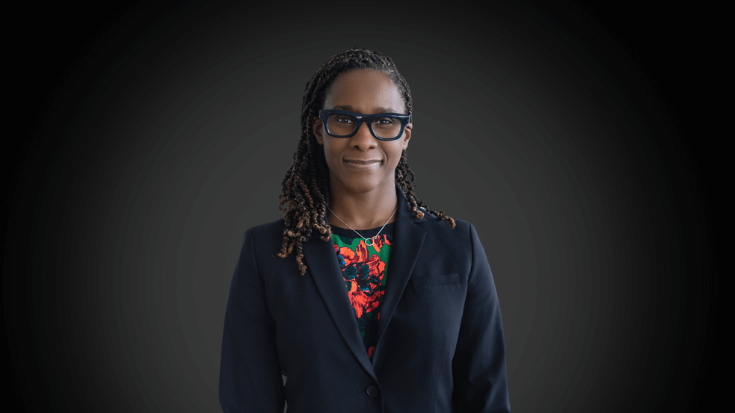
“People are very simple. They want to be appreciated, seen and heard Above all they want to be respected.” – Sheresse Weeks, Director of Health Services for Ambulatory Care and Day Procedures
As a child of immigrant parents who came to Canada from Trinidad and Tobago, I grew up in communities that lacked diversity. Over time, I have seen the landscape change in terms of what it means to be a minority, and I am pleased to see these changes slowly occurring in the health care system as diversity becomes more represented in the health care professions.
My parents are my heroes. They are kind, thoughtful and extremely giving and have worked hard to instill in me the values of integrity, kindness and a strong work ethic from a young age. Not only are these important values that I have carried into my life, they are also evident in my approach to health care delivery.
As a nurse, I think it is very important to find a common ground or something that can connect us with our patients. I have seen patients and providers overcome many differences, including those based on race, to connect with each other through a shared or similar experience or other common identifier. This may be based on their similar experiences as parents with a sick child, or as immigrants who have come to Canada, for example.
It’s those similarities that can make all the difference, demonstrating that while care may come from a provider (or be delivered to a patient) that doesn’t look like you, there is common ground and a connection that can be made.
For me, Black History Month is an opportunity for an intentional pause. It’s a time to be both grateful for the pioneers who came before us, as well as the skilled people who currently occupy space and do valuable work in our communities. It is an opportunity to assess and give voice to what may be available to the next generation as a result of the work happening now.
I have been a nurse for over twenty years and in that time I have seen some positive changes in diversity. I try to focus my energy on how far we’ve come and the progress we’re making today, taking time to stop and be grateful. But there are also disparities, in terms of access and experience, and I am acutely aware of the challenges that remain and the responsibility we have to address them.
I really believe that a lot of it comes down to how we communicate in a system that is very complex, has many different providers and participants coming together, and where fear and other emotions are often at play.
Earlier in my career, I taught a healthcare communication class. We started each class with a version of the children’s game “Telephone”. As in the game, a message would be whispered to a line of people, each person sharing what they had heard with the other until everyone had participated. The last person in line would then say the phrase out loud as they understood it.
Not once in the four years I taught that class did the last person in line speak the phrase that started the exercise. Usually it wasn’t even close.
I can only imagine the frustration and confusion experienced by someone new to Canada, who does not speak English as their primary language, trying to navigate and interact with a real game of ‘Telephone’, on a system that is unknown, different and extremely complex. . Add in the challenges many Manitobans face in terms of transportation, weather, access to child care, and those barriers that exist beyond race in trying to access our health care system make it even more difficult.
Finding a place of common understanding is hard but necessary work – it can involve finding the right words, really listening, repeating questions and answers, and trying to understand and relate to each other. It is work that can allow us to overcome barriers that might otherwise exist based on our appearance. Our communities are rich in cultural diversity and will benefit from a health care system with that lens as well.
In my dream world of health care, we will change and adjust our system to meet the needs of patients in a way that removes some of these barriers while taking into account the whole patient and their needs. There is a lot of potential for healthcare to evolve this way, and I believe it is possible.


